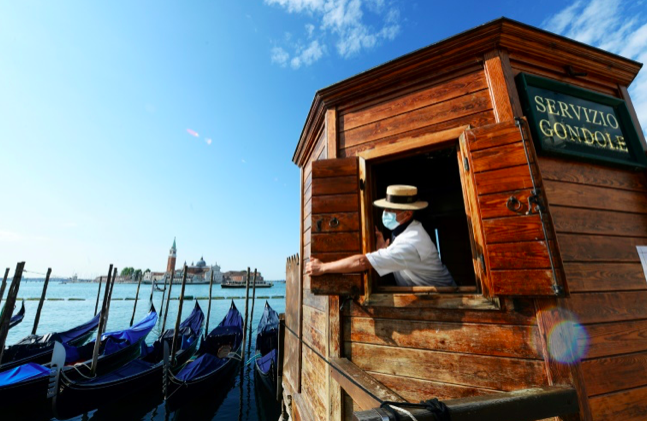Italy reopened to travellers from Europe on Wednesday, three months after the country went into coronavirus lockdown, with all hopes pinned on reviving the key tourism industry as the summer season begins.
Gondolas were ready to punt along Venice’s canals, lovers will be able to act out “Romeo and Juliet” on Verona’s famed balcony, and gladiator fans can pose for selfies at Rome’s Colosseum.
But there were fears many foreign tourists would be put off coming to a country still shaking off a vicious pandemic.
“We hoped to see some movement from today, but have no foreign tourists booked in for this week or next,” said Alessandra Conti, a receptionist at the Albergo del Senato hotel which overlooks the Pantheon in Rome.
“We’ve got a few reservations from mid-June… (but) are still getting lots of cancellations for this summer”.
Italy was the first European country to be hit hard by the coronavirus and has officially reported more than 33,500 deaths — the third highest toll in the world.
It imposed an economically crippling lockdown in early March and has since seen its infection numbers drop off dramatically.
With the country facing its deepest recession since World War II, it needs foreign tourists to return, and quickly.
But it is still reporting hundreds of new cases a day, particularly in the northern Lombardy region, and experts warn the government may be moving too quickly in permitting travel between regions and abroad.
Infectious diseases expert Massimo Galli said it would have been better to wait until July to reopen the borders.
The virus “smoulders under the ashes, and when it finds the ideal conditions, it explodes. Even more so if we lower our guard,” he said Wednesday.
International flights into Milan, Rome and Naples increased, with a few also coming into smaller, regional airports.
There were concerns that those who usually come in by car, train or ferry from neighbouring countries would go elsewhere on their holidays.
Switzerland has warned its citizens that if they go to Italy they will be subject to “health measures” on their return. The country will open its borders with Germany, France and Austria on June 15, but not with Italy.
Austria is lifting restrictions in mid-June with Germany, Switzerland, the Czech Republic, Slovakia and Hungary — but again, not Italy, described last week by Vienna’s health minister as “still a hotspot”.
Other countries, such as Belgium and Britain, are still advising against, or forbidding, all non-essential travel abroad.
In response to perceived anti-Italian sentiment, Foreign Minister Luigi Di Maio has warned countries not to treat Italy “like a leper”.
He said Saturday he would be travelling to Germany, Slovenia and Greece to persuade them Italy is safe for foreign tourists, and was set to meet his French counterpart Jean-Yves Le Drian later Wednesday in Rome.
Arrivals in Italy from Europe will not be required to self-isolate unless they have recently travelled from another continent.
At the border between the town of Ventimiglia in Italy and Menton in France, more people were trying to enter France from Italy than the other way round early Wednesday, and controls on the French side were very strict.
Italy’s lockdown has had a particularly devastating effect on the tourism sector, which amounts to some 13 percent of GDP.
Only 40 of Rome’s 1,200 hotels have reopened, the Corriere della Sera newspaper said, and just a dozen in Milan.
Restaurants, cafes and beach establishments have slowly reopened over the past two weeks — although the government has said it reserves the right to impose localised lockdowns if it sees contagion numbers rise.
“Who’s going to come? No one from South America, China or the US. And the Europeans will be scared,” Mimmo Burgio, 62, owner of a cafe near Rome’s Colosseum, told AFP.
“We’re pinning all our hopes on Italian tourists, but… I’m afraid they’ll go to the seaside instead,” he said.
AFP

